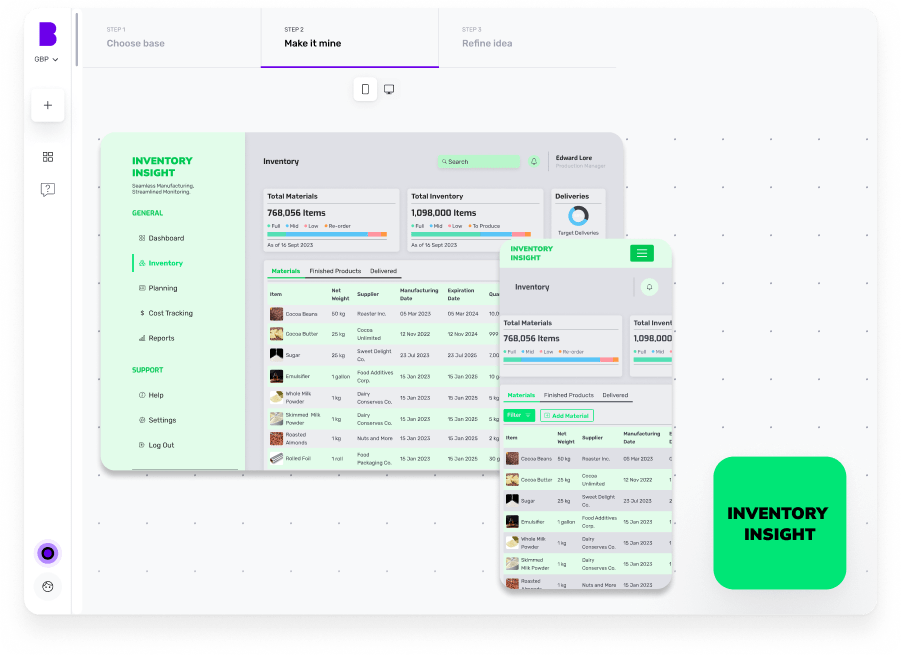Getting information technology (IT) right can be difficult for a growing business. IT is highly technical, is constantly evolving and needs to scale with the business. It demands attention, but often founders’ skills and focus are on growing their company or building their app. That’s why a lot of growing business leaders turn to IT outsourcing.
In this blog, we’re going to lay out the ins and outs of IT outsourcing services. What it is, what forms it can take, how it works and the benefits and risks of IT outsourcing. Hopefully, by the end you’ll discover whether outsourcing is right for you, or feel confident that you can handle IT in house.
What is IT Outsourcing?
IT outsourcing is the practice of hiring an external service provider to handle some or all of a company’s technology functions. Companies often choose to outsource IT to reduce costs, gain access to specialised expertise, improve efficiency and focus on their core business activities.
Information Technology is now so much more than laptops and computer systems. IT can cover:
- Software development
- Infrastructure management
- Technical support
- Data centre operations
- Cybersecurity and access
It’s a lot to manage, requiring a whole range of skills and competencies. But a great IT department will facilitate a company's growth by protecting it against cyber threats, keeping systems online, harnessing new technologies and running efficiently.
Now, let’s get into IT outsourcing in more detail 👇
Types of IT Outsourcing
There are 3 main types of IT outsourcing: Nearshore, Offshore and Onshore. Let’s talk about them and why each can be an option.
Offshore
Offshore outsourcing is the practice of delegating IT functions to a company in another location. The main reason for offshoring your IT department is access to clients who can offer lower rates thanks to cheaper labour and general operating costs.
Developing countries like the Philippines and India, which are amongst the top destinations for outsourcing, have developed thriving IT sectors as a result.
But there are downsides, too. Challenges presented by offshore outsourcing can include:
- Time zone differences - coordinating work across vastly different time zones can be difficult, leading to communication delays
- Quality control - the arm’s length nature of offshoring makes it harder to maintain high standards
- Communication challenges - while the level of English will be generally high, connectivity problems can hinder communication
- Data security - additional complexities can arise from data protection and regulatory compliance
Onshore
Onshoring IT is contracting an IT solutions provider within your own country. Companies find that closer cultural alignment, easy communication, regulatory compliance and quality control make it an advantageous option. It’s the closest thing to in-house.
The downside is you lose the cost benefit that offshoring provides.
Nearshore
Sitting somewhere in the middle of offshoring and onshoring is nearshoring. Nearshoring is offshoring but in a geography that is more closely aligned to yours in terms of time zone, language and regulation/compliance. Nearshoring also offers reduced transport costs and easier site visits.
Nearshoring provides fewer options. Companies in the United States can look to the likes of Mexico, Colombia, Costa Rica and Brazil for nearshoring partners. EU-based companies tend to look towards Eastern European countries, such as Poland, Ukraine, Czechia, or South Africa.
The advantages of nearshoring compared to offshoring when it comes to IT are debatable. The advantages are greater for companies moving large amounts of goods around, which doesn’t greatly apply to IT.
Cloud Computing
Cloud computing plays a big role in the delivery of outsourced services.
Cloud hosting services allow a company’s IT infrastructure to be accessed from anywhere in the world. Tools like Google Workspace, Microsoft 365 and various project management platforms allow access to data, applications and infrastructure.
One of cloud computing’s key features is its scalability. Cloud computing providers such as AWS and Microsoft Azure have vast resources that you can tap into according to your needs.
Cloud computing also offers the benefit of no capital expenditure, on behalf of your own company or your outsourced IT partner. You can access cutting-edge technologies without the need for substantial investment.
Managed services
Managed IT services are when your outsourced IT provider actively monitors and manages your IT. This typically includes server and system infrastructure, cybersecurity and end-user systems.
These contracts work under a tightly defined Service Level Agreement (SLA).
Managed services are an alternative to on-demand IT services, where an outsourcing partner helps fix things when they break, rather than managing the whole function.
Now, let’s dig in deeper into the benefits of IT outsourcing. 👇
Benefits of Hiring IT Outsourcing services
The benefits of IT outsourcing services can be split into 7 key areas:
1. Reduce costs
The #1 reason why outsourcing is a popular and viable business strategy is cost reduction. Without a cost advantage, the benefits of outsourcing are much reduced.
Outsourcing offers cost efficiencies due to lower labour and operating costs, tax incentives and economies of scale.
Many offshore destinations, such as India, the Philippines and Eastern Europe, have a lower cost of living compared to Western countries. The result? Lower wages for similarly skilled IT professionals, allowing companies to reduce their labour costs significantly.
Offshore partners will also enjoy lower real estate and other operating costs, providing an additional cost advantage.
The IT outsourcing sector is huge, worthmore than $600 billion globally in 2024 and growing fast. Governments of developing countries are keen to get a slice of this pie and pass legislation that offers tax incentives to grow their domestic IT outsourcing sector.Armenia is an example of a country that has recently introduced such a law. These incentives allow IT offshoring partners to operate more cheaply, providing a competitive advantage.
2. Ensure flexibility and agility in the processes
A second key advantage of IT outsourcing is flexibility and agility.
Flexible
An IT partner will have a large pool of talent to draw from, allowing them to increase (or reduce) human resources on an account at short notice. They won’t have to hire and fire these staff, instead assigning them to different accounts or other tasks, giving them great staffing flexibility.
Among these staff are specialists with a wide range of skills. If you want to onboard a new technology, your IT outsourcing partner will have someone they can bolt on to support your new technological direction.
IT outsourcing companies know that time zones are a big challenge and will have processes to mitigate them. This means your company does not need to worry about downtime.
Agile
Offshore IT teams can be mobilised quickly to start new projects or address urgent issues. This helps businesses respond to emerging opportunities or challenges.
Offshore teams are often well-versed in Agile methodologies. Agile is a methodology that allows teams to deliver IT solutions quickly. This helps offshore partners adapt to feedback and changing requirements quickly.
3. Have a dedicated team
A dedicated team allows your company to build a rapport with your IT outsourcing partners. Rather than a revolving cast of unfamiliar faces, with a dedicated team, you can form relationships with your partners’ staff, facilitating communication and collaboration.
A dedicated team also means they are not busy with another client, and can stay focused on the task at hand. This helps them learn about the nuances of your company and its particular needs and quirks and so do a better job.
4. Look for service quality and efficiency
IT outsourcing partners will be highly skilled at all things IT and will have handled all sorts of problems over the years.
5. Increase productivity and focus on the core business
An outsourced IT function allows your senior team to put their energies into growing the company and maximising their valuable skills.
6. Security and accountability
IT outsourcing partners offer security and accountability. They will be familiar with the key guardrails that Western companies operate under, such as GDPR, ISO and CCPA. Many partners will have a range of ISO certifications, for instance, guaranteeing a high standard of data security.
The SLAs you sign with your partners will enforce accountability, incentivising good performance.
7. Access to global resources
Many Western companies are finding domestic IT talent in short supply. The Computing Technology Industry Association (CTIA) found that the US tech workforce is growing at twice the rate of non-tech jobs. But despite that, unemployment among IT workers in the US is among the lowest of all sectors. The IT labour market is tight!
IT outsourcing offers a way around this. IT outsourcing allows a company to draw from global tech talent. This can feed into costs. Companies can seek relatively loose labour markets where rates are lower.
Potential Risks in IT Outsourcing
Despite the many benefits of outsourcing, we need to round out the picture with some of the challenges and risks it presents.
Security concerns
Introducing a third party into any data-handling procedure creates security risk. This is because an IT partner probably has numerous clients, this makes them a target for cyber criminals, who could potentially hack multiple companies in one go.
Ensuring compliance with data protection regulations can be challenging. Non-compliance can result in heavy fines and legal action.
Quality Control
Quality of work can be tricky to control when working with an outsourced IT partner. While SLAs can give you an exit if quality is poor for too long, sometimes the damage can already be done.
It can be hard to evaluate a partner’s true capabilities before onboarding them. They might promise more they can deliver, particularly around emerging technologies, like AI. Or they can be overly ambitious with the number of clients they take on, overstretching their workforce and delivering substandard performance.
Miscommunications due to language gaps and technical difficulties can complicate explaining and rectifying issues.
Cultural Differences
Differences in communication styles can lead to misunderstandings. Human language can be very complex, with how things are said sometimes carrying more meaning than the words themselves. Even when sharing a common tongue, these complexities can cause problems.
Many cultures have an abundance of national holidays compared to the United States, which has the fewest in the world. The several occasions per year where your IT partner is off work entirely can be problematic.
Best Practices for IT Outsourcing
Now, let’s understand some of the best practices when it comes to IT outsourcing.
Determine the right project
Make sure you have evaluated your requirements precisely before engaging with an outsourcing provider. Decide whether managed services or on-demand services are right for you. And clarify what functions you need, be it advanced Cloud and other software, or more run-of-the-mill IT solutions.
Choose a provider you can trust
How do you assess trust when it comes to choosing an IT outsourcing partner? Here are a few tips:
- Assess their experience delivering similar projects in the past
- Assess their Quality Assurance processes and certifications
- Assess how they communicate with you from the word go. This can be indicative of future communication habits
- Consider a site visit to check if everything is as promised and to form a relationship with your account managers.
Go Agile
Look for an IT provider that uses lean/agile practices in its day-to-day operations. This is indicative of an organisation that incorporates modern ways of working and will be responsive to issues that arise.
Don't base your decision just on price
Even though price is the primary driver of outsourcing decisions, don’t let it be the only consideration. Even within outsourcing, there are a wide range of price points. Every compromise has an associated risk; consider carefully which are worth taking.
Documentation is control
Documentation is vital in an IT outsourcing partnership. It helps clearly define the project scope, deliverables, timelines and expectations. This includes contracts, SLAs and Statements of Work, which outline what the outsourcing provider is responsible for and what the client expects.
Documentation is how technical knowledge and requirements are transferred between parties. They contain the information needed by the outsourcing partner to understand the client’s systems and processes.
A company’s IT systems and needs evolve, and documentation helps track those changes. Version control allows a system to revert to a previous state if a problem arises that can’t be fixed.
Lastly, documentation is vital for onboarding new staff onto a project. It helps them get up to speed and understand what is required of them.
Own your project
It’s vital to remember that IT outsourcing is not totally hands-off. Even though an outsourced team will handle many things by themselves, it is still a working relationship requiring regular communication, meetings and even site visits.
Conclusion
IT outsourcing is a well-established practice that's viable for many businesses. You have an array of options in terms of location (onshore, offshore, or nearshore), price point and service requirements.
It’s probably true that nearly every company should at least consider outsourcing their IT department, and improvements in internet infrastructure and communication software make it an ever-more appealing option.
If worrying about IT is stopping you from building your own app or business, then rest assured: there are options out there for a company of any size.
FAQ:
What are the 3 types of IT outsourcing?
The 3 types of IT outsourcing are offshore (a foreign country, often in Asia), onshore (in your native country) and nearshore (a nearby country that has cultural and time zone similarities to your own).
What is outsourcing in simple words
IT outsourcing is the practice of one company hiring another company to handle its information technology functions.
Why outsource your IT department
Outsourcing your IT department can be cheaper than running it in-house. Downsides to outsourcing, like less control and communication problems, are often worth the lower price.
Create robust custom software today
100s of businesses trust us to help them scale.
Book a demoBy proceeding you agree to Builder.ai’s privacy policy
and terms and conditions

Stories published by the editorial team at Builder.ai.










 Facebook
Facebook X
X LinkedIn
LinkedIn YouTube
YouTube Instagram
Instagram RSS
RSS


